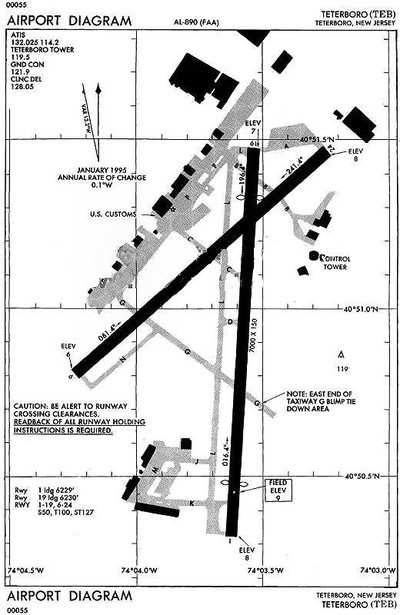Icing Conditions Reportedly Non-Existent
From the NTSB...
The National Transportation Safety Board today released the
following update on its investigation into the crash of a
Bombardier Challenger CL-600 corporate jet on February 2, 2005, in
Teterboro, New Jersey. The airplane overran the departure end
of runway 6 during an aborted takeoff attempt and crashed into a
fence, two cars, and a warehouse. A postcrash fire ensued. The
pilot, copilot, and two automobile occupants received serious
injuries, and a cabin aid and eight passengers received minor
injuries.
The accident occurred about 0717. The flight was departing
Teterboro Airport for Midway Airport, Chicago, IL. Visual
meteorological conditions prevailed at the time of the
accident.

Preliminary evidence indicated that icing conditions at
Teterboro were minimal or non-existent on the morning of the
accident. Video surveillance recordings were obtained from the Port
Authority. These recordings corroborate witness accounts and flight
data recorder (FDR) data that indicated that the airplane did not
pitch up during takeoff, even though the airplane was traveling at
a high speed. Upper wing ice contamination has not been associated
with the inability of an airplane to pitch up for takeoff; rather,
upper wing ice is typically associated with the inability of an
airplane to fly after it has pitched up to a takeoff attitude.
The airplane wreckage was removed from the accident site and was
transferred to a nearby storage facility for further inspection.
The recovered contents of the airplane were weighed. The center of
gravity (CG) was found to be well forward of the allowable limit.
The initial findings of the investigation have indicated that, the
airplane, as configured, could have a CG well forward of the
forward limit based on its cabin interior configuration combined
with full or nearly full fuel tanks, including the fuselage tank,
and a full or nearly full passenger load and minimum passenger
baggage.
In addition, the horizontal stabilizer trim position was
documented in the middle of the green band (which is the normal
takeoff range). The operations and performance groups have
conducted tests using a simulator to evaluate the airplane's
takeoff characteristics based on the trim settings and weight and
balance data. The initial findings of those simulations indicate
the airplane would not rotate for take off at the defined rotation
speed.
The initial examination of the pitch control system revealed no
anomalies. The pitch control system and autopilot will be further
examined. Engine examination, FDR data, and flight crew and
eyewitness reports indicated that the engines functioned as
expected, including thrust reverser deployment.

The FDR operated for only about 10 seconds, starting when the
airplane was decelerating through 153 knots and ending when the
airplane had slowed to 91 knots. The FDR and systems groups will
examine the FDR wiring and logic to determine why only 10 seconds
of data were recorded.
The airplane was equipped with a cockpit voice recorder (CVR).
The CVR group has completed a transcript of the recording, which
will be released at a later date in accordance with Federal
law.
The operations group interviewed the pilot during his stay in
the hospital. The group is performing an extensive review of flight
logs and airplane handbooks. Members of the operations and
maintenance records groups traveled to Fort Lauderdale, Florida,
and Muscle Shoals, Alabama, to interview personnel from Platinum
Jet Management, the operator of the airplane.
The investigative team will work with the manufacturer of the
airplane, Bombardier, to perform a detailed examination of the
performance of the airplane. Documentation defining the
relationship between the operator, the certificate holder, and the
FAA is also being gathered.
 ANN's Daily Aero-Term (04.20.24): Light Gun
ANN's Daily Aero-Term (04.20.24): Light Gun Aero-News: Quote of the Day (04.20.24)
Aero-News: Quote of the Day (04.20.24) ANN's Daily Aero-Linx (04.21.24)
ANN's Daily Aero-Linx (04.21.24) Aero-News: Quote of the Day (04.21.24)
Aero-News: Quote of the Day (04.21.24) ANN's Daily Aero-Term (04.21.24): Aircraft Conflict
ANN's Daily Aero-Term (04.21.24): Aircraft Conflict




